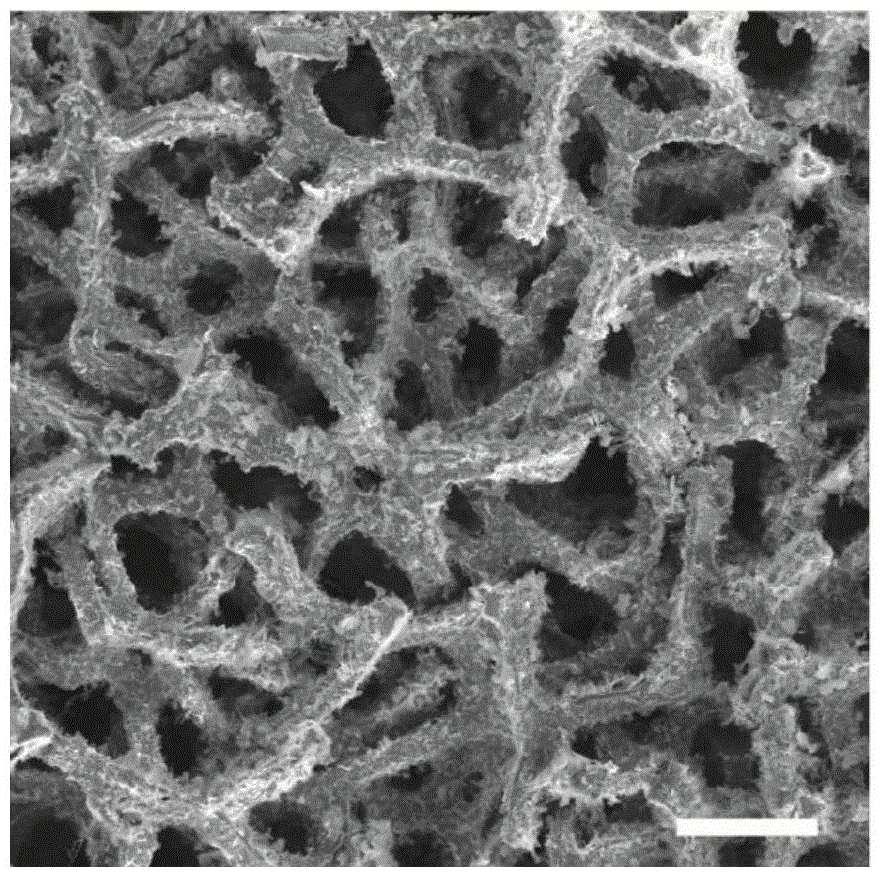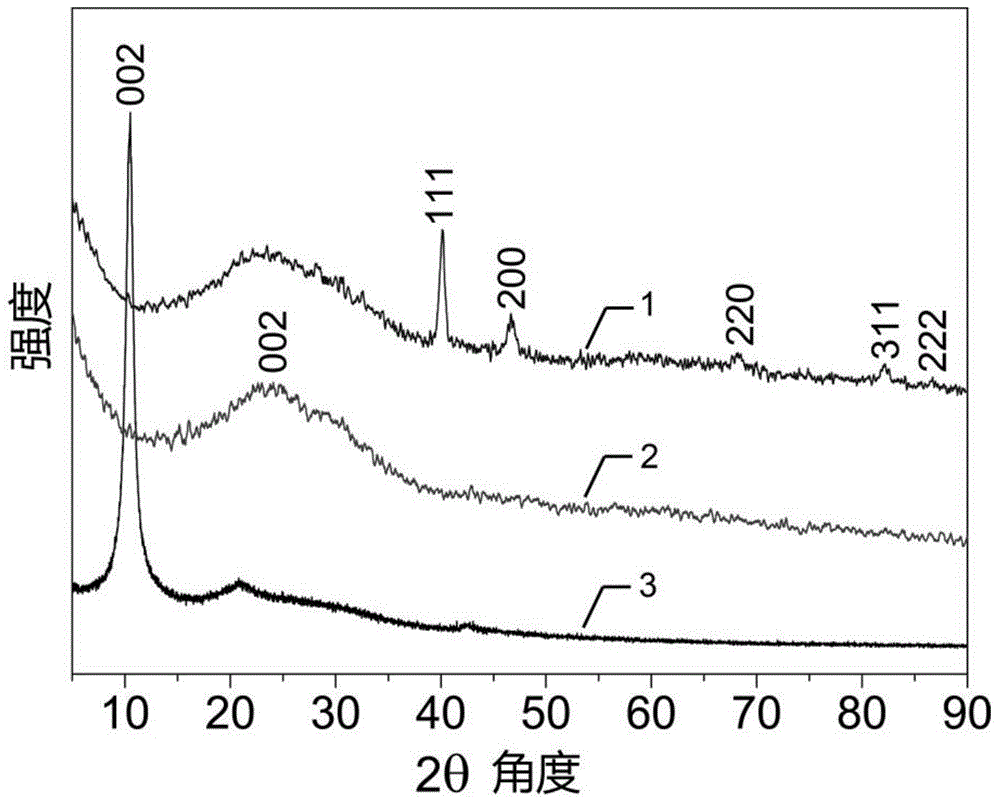Preparation method of nanometer palladium-graphene three-dimensional porous composite electrocatalyst
A three-dimensional porous, electrocatalyst technology, applied in chemical instruments and methods, physical/chemical process catalysts, metal/metal oxide/metal hydroxide catalysts, etc. Difficult application occasions and other problems, to achieve the effect of increased specific surface area, wide source of raw materials and low cost
- Summary
- Abstract
- Description
- Claims
- Application Information
AI Technical Summary
Problems solved by technology
Method used
Image
Examples
Embodiment 1
[0027] First cut the nickel foam into a size such as 1cm (length) X 1cm (width) X 1mm (height), then clean it with glacial acetic acid, acetone and ethanol, then wash it with deionized water for 5 minutes and then dry it ;
[0028] Next, the oxidation exfoliation method (Hummers method) is preferably used to prepare a graphene oxide aqueous solution with a mass concentration of 0.5 mg / mL to 10 mg / mL. The specific process is as follows: take 1 g of natural flake graphite powder, mix it with 23 mL of concentrated sulfuric acid and 0.5 The sodium nitrate of 2g was stirred and mixed under ice-bath conditions, then slowly added 3g potassium permanganate to the solution, after stirring for 2 hours, the temperature was raised to 35 degrees, after continuing to stir for 2 hours, slowly added 46mL of deionized water, Then the temperature was further raised to 95 degrees and maintained for 30 minutes, then about 100mL of deionized water was added to the solution, the temperature was adj...
Embodiment 2
[0032] First cut the nickel foam into a size such as 1cm (length) X 1cm (width) X 1mm (height), then clean it with glacial acetic acid, acetone and ethanol, then wash it with deionized water for 5 minutes and then dry it ;
[0033] Next, it is preferred to use the oxidation exfoliation method (Hummers method) to prepare the graphene oxide aqueous solution, and adjust its key parameters to a mass concentration of 0.5 mg / mL, and then directly soak the foamed nickel after cleaning and let it stand for reaction, wherein the overall system The reaction temperature is controlled at 80°C, and the soaking time is 12 hours. During this process, the nickel foam as the substrate directly reduces graphene oxide during soaking, and deposits and grows graphene on the surface of the nickel foam. After the reaction, take it out Foam nickel, and wash the surface with deionized water to form a three-dimensional porous nickel foam-graphene product;
[0034] Next, the foamed nickel-graphene prod...
Embodiment 3
[0036] First cut the nickel foam into a size such as 1cm (length) X 1cm (width) X 1mm (height), then clean it with glacial acetic acid, acetone and ethanol, then wash it with deionized water for 5 minutes and then dry it ;
[0037] Next, preferably adopt oxidation exfoliation method (Hummers method) to prepare graphene oxide aqueous solution, and its key parameter is adjusted to mass concentration 6mg / mL, then the foamed nickel after cleaning is directly soaked wherein standstill reaction, wherein the whole system The reaction temperature was controlled at 30°C, and the soaking time was 8 hours. During this process, the nickel foam used as the substrate directly reduced graphene oxide during soaking, and deposited and grew graphene on the surface of the nickel foam. After the reaction, the foam was taken out Nickel, and the surface is cleaned with deionized water to form a foamed nickel-graphene product with a three-dimensional porous structure;
[0038] Next, the foamed nick...
PUM
| Property | Measurement | Unit |
|---|---|---|
| particle size | aaaaa | aaaaa |
Abstract
Description
Claims
Application Information
 Login to View More
Login to View More - R&D
- Intellectual Property
- Life Sciences
- Materials
- Tech Scout
- Unparalleled Data Quality
- Higher Quality Content
- 60% Fewer Hallucinations
Browse by: Latest US Patents, China's latest patents, Technical Efficacy Thesaurus, Application Domain, Technology Topic, Popular Technical Reports.
© 2025 PatSnap. All rights reserved.Legal|Privacy policy|Modern Slavery Act Transparency Statement|Sitemap|About US| Contact US: help@patsnap.com



